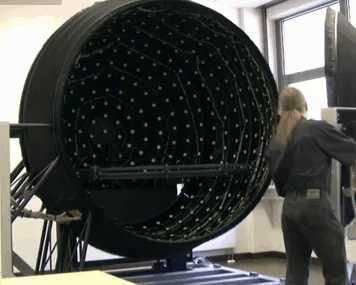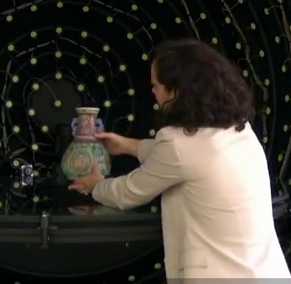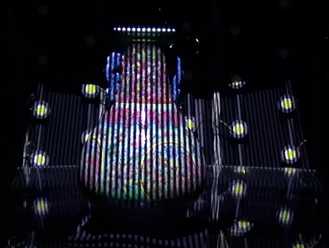| When Kinect Isn't Enough - OrcaM 3D Input |
| Written by Harry Fairhead | |||
| Friday, 20 January 2012 | |||
|
OrcaM is a 3D scanning machine that can be thought of as a high-precision version of the Kinect. Here's a video that shows it in action. There is no doubt that the Kinect constitutes a revolution in the way we can use machines to gather data on the real world. The Kinect Fusion algorithm, for example, lets you build a 3D model in real time simply by scanning the area with a Kinect and the more you scan the more accuracy you get.
However, there comes a moment when you need the HiFi equivalent of the Kinect and then nothing but OrcaM will do. Built by Germany's Research Center for Artificial Intelligence (DFKI) it is designed to be used to create super accurate models of museum and art objects that are good enough to be used in place of the originals.
OrcaM is a large sphere that you can put a real world object inside for 3D scanning. The object can be up to 80cm in diameter and once inside it is scanned using an array of lights and seven cameras positioned over surface of the sphere. The data capture is automatic and fringe patterns are projected to the object and cameras from different positions in the array work out the geometry and take high resolution photos of the surface to create a texture map. In other words OrcaM uses a structured light approach just like the Kinect but it does it to a higher accuracy and it provides controlled lighting to capture the color and texture of the surface.
After scanning building the model is automatic and the result is an HDR 3D fully textured model that is of high enough quality to be use to archive valuable artifacts from museums - hence the example in the video. Notice that the matching up of the texture map and the 3D wire frame is also automatic. The video shows the scanning process and the result and an example HDR projection. (Note that the vase isn't symmetrical in real life!)
The wire frame model used 20,000 triangles based on 300 million measured points accurate to less than a millimeter. The texture map (16M pixels) is then applied in the usual way to create a high resolution rendering using various lighting conditions and surface rendering technique. OrcaM may not be as low cost or easy to use as the Kinect Fusion but when you need accuracy these are the lengths you have to go to. More InformationPress release in German Further readingOpen Souce Kinect Fusion - Instant Interactive 3D Models KinectFusion - instant 3D models KinectFusion - realtime 3D models
Comments
or email your comment to: comments@i-programmer.info To be informed about new articles on I Programmer, subscribe to the RSS feed, follow us on Google+, Twitter, Linkedin or Facebook or sign up for our weekly newsletter.
|
|||
| Last Updated ( Friday, 20 January 2012 ) |




